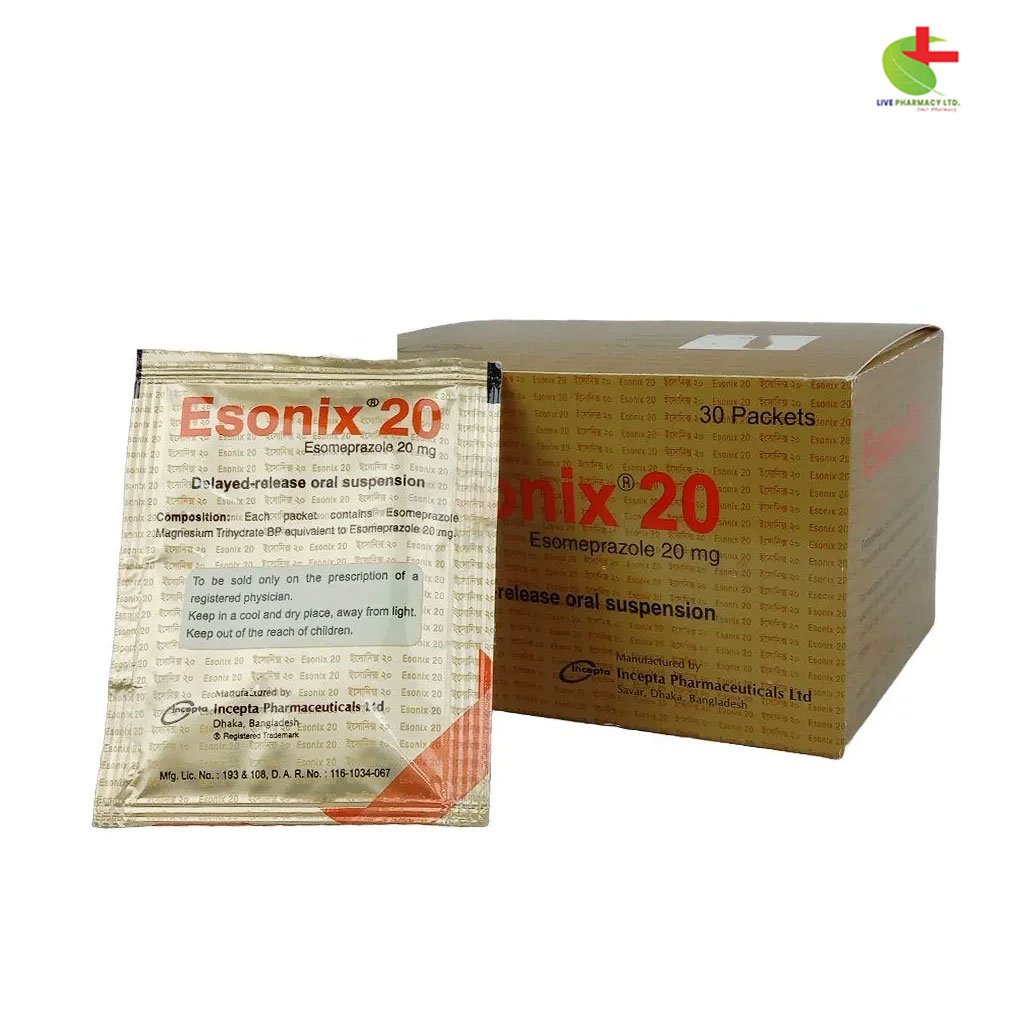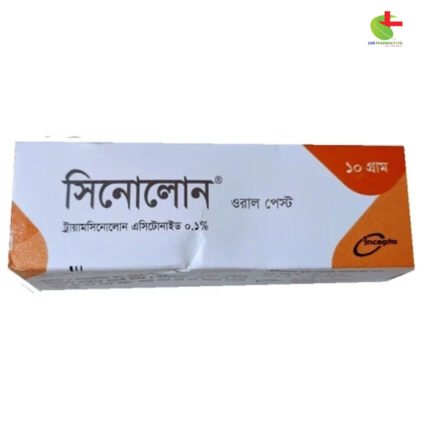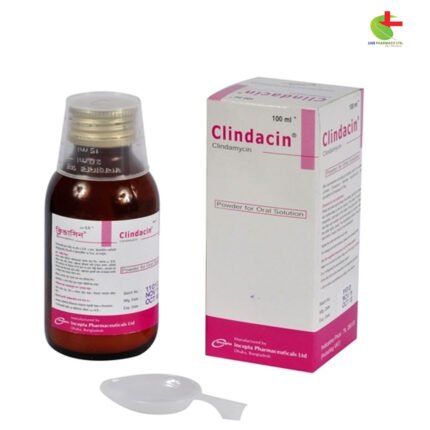Esonix 20
7.00৳ Sachet (20gm)
- Esonix is a proton pump inhibitor used for the relief of chronic heartburn and symptoms associated with GERD.
- It promotes the healing of erosive esophagitis and maintains healing while also being effective in eradicating Helicobacter pylori in duodenal ulcers.
- Available in oral and intravenous forms, Esonix suppresses gastric acid secretion for improved gastrointestinal health.
- It is contraindicated in patients with known hypersensitivity and should be used under medical supervision.
 Brand
Brand
|
Incepta Pharmaceuticals Ltd |
|---|---|
 Type
Type
|
Oral Powder |
Indications for Esonix
Esonix is prescribed for the following conditions:
- Relief of chronic heartburn symptoms and related issues associated with gastroesophageal reflux disease (GERD).
- Healing of erosive esophagitis.
- Maintenance of healing in erosive esophagitis.
- As part of a triple therapy regimen with amoxicillin and clarithromycin to eliminate Helicobacter pylori infection in patients with duodenal ulcers.
- Management of Zollinger-Ellison Syndrome.
- Treatment of acid-related dyspepsia.
- Addressing duodenal and gastric ulcers.
Consult a registered healthcare professional before taking this medication.
Pharmacology
Esomeprazole, the active ingredient in Esonix, functions as a proton pump inhibitor (PPI), effectively reducing gastric acid secretion through targeted inhibition of the H+/K+-ATPase in gastric parietal cells. As the first single optical isomer of a PPI, esomeprazole offers superior acid control compared to traditional racemic PPIs.
Absorption: Esonix capsules contain an enteric-coated pellet formulation of esomeprazole magnesium. Upon oral intake, peak plasma concentrations (Cmax) are reached approximately 1.5 hours (Tmax) post-administration. Increases in dosage lead to a proportional rise in Cmax, significantly enhancing the overall plasma concentration over time.
Consult a registered healthcare professional before taking this medication.
Dosage Guidelines
Oral Dosage:
- Healing of Erosive Esophagitis: 20 mg or 40 mg once daily for 4-8 weeks, with most patients showing healing within this timeframe. If healing is not achieved, an additional 4-8 weeks may be warranted.
- Maintenance of Healing in Erosive Esophagitis: 20 mg once daily (clinical studies did not extend beyond 6 months).
- Symptomatic GERD: 20 mg once daily for 4 weeks; if symptoms persist, a further 4 weeks may be considered.
- Helicobacter Pylori Eradication: Triple therapy combining Esonix 40 mg once daily, amoxicillin 1000 mg twice daily, and clarithromycin 500 mg twice daily for 10 days.
- Zollinger-Ellison Syndrome: Dosage ranges from 20-80 mg once daily, tailored to individual needs.
- Acid-Related Dyspepsia: 20-40 mg once daily for 2-4 weeks, depending on response.
- Duodenal Ulcer: 20 mg once daily for 2-4 weeks; Gastric Ulcer: 20-40 mg once daily for 4-8 weeks.
IV Injection or Infusion:
For GERD with Erosive Esophagitis:
- Adults (≥18 years): 20 mg or 40 mg once daily; IV injection over >3 minutes or IV infusion over 10-30 minutes.
- Pediatric Patients (1 to 17 years):
- Weight <55 kg: 10 mg once daily.
- Weight ≥55 kg: 20 mg once daily.
- 1 month to <1 year: 0.5 mg/kg once daily.
- IV infusion over 10-30 minutes.
For Risk Reduction of Rebleeding in Gastric or Duodenal Ulcers:
- Adults (≥18 years): 80 mg via IV infusion over 30 minutes, followed by a continuous infusion of 8 mg/h for 72 hours.
Consult a registered healthcare professional before taking this medication.
Administration Instructions
Tablets or Capsules: Should be swallowed whole and taken one hour before meals.
Oral Suspension: Mix the contents of the packet with 15 ml of water in a small glass, stir well, and allow to thicken for 2-3 minutes. Consume within 30 minutes. For nasogastric or gastric tube administration, mix with 15 ml of water in a syringe and follow the same procedure.
IV Injection: Prepare the injection by adding 5 ml of 0.9% Sodium Chloride to the vial containing the dry powder. The reconstituted solution should be clear and colorless to slightly yellow, administered intravenously over at least 3 minutes. The prepared solution must be used within 12 hours and can be exposed to normal indoor lighting at a maximum of 30°C.
Consult a registered healthcare professional before taking this medication.
Drug Interactions
Esonix is primarily metabolized in the liver by CYP2C19 and CYP3A4, with minimal interactions expected with drugs metabolized by other CYP enzymes. Co-administration with phenytoin, warfarin, quinidine, clarithromycin, and amoxicillin has not shown clinically significant interactions.
However, Esonix can potentially affect the metabolism of CYP2C19 substrates, such as diazepam, leading to increased plasma levels of diazepam. Additionally, Esonix may impact the absorption of drugs dependent on gastric pH, such as ketoconazole and iron salts.
Combination therapy with clarithromycin can elevate the plasma levels of Esonix and 14-hydroxyclarithromycin.
Contraindications
Esomeprazole is contraindicated for individuals with known hypersensitivity to any component of the formulation.
Side Effects
Common side effects associated with Esonix include headache, diarrhea, nausea, flatulence, abdominal pain, constipation, and dry mouth. The frequency and type of adverse events during long-term maintenance treatment (up to 12 months) do not significantly differ from those during short-term use.
Pregnancy & Lactation
Currently, there are no comprehensive studies on the effects of Esonix during pregnancy. While animal studies have indicated no teratogenic effects, the impact of esomeprazole on breast milk is not well studied. Discontinuation of breastfeeding should be considered if Esonix use is deemed necessary.
Precautions & Warnings
General: Response to Esonix treatment does not rule out the possibility of gastric malignancy.
For patients with swallowing difficulties, Esonix capsules may be opened and the pellets mixed with a tablespoon of applesauce (not hot) and swallowed immediately. The mixture should not be stored for future use. Antacids may be taken alongside Esonix.
Use in Special Populations
- Pediatric Use: The safety and efficacy of Esonix in children have not been established.
- Geriatric Use: No significant differences in safety or efficacy between elderly and younger patients have been observed, although increased sensitivity in older individuals cannot be excluded.
- Hepatic Insufficiency: No dosage adjustments are needed for mild to moderate hepatic impairment. For severe impairment, limit the dosage to 20 mg once daily.
- Renal Insufficiency: Pharmacokinetics in renal impaired patients are similar to those in healthy individuals, with less than 1% of Esonix excreted unchanged in urine.
Overdose Effects
A single oral dose of Esonix at 510 mg/kg (approximately 103 times the human dose) has been fatal in animal studies. Symptoms of acute toxicity may include reduced motor activity, respiratory changes, tremors, ataxia, and clonic convulsions. While there have been no reported human overdoses, symptomatic and supportive treatment is advised as there is no known specific antidote.
Storage Conditions
Store Esonix in a cool, dry place at temperatures not exceeding 30°C. Protect from light and moisture, and keep out of reach of children.













Reviews
There are no reviews yet.